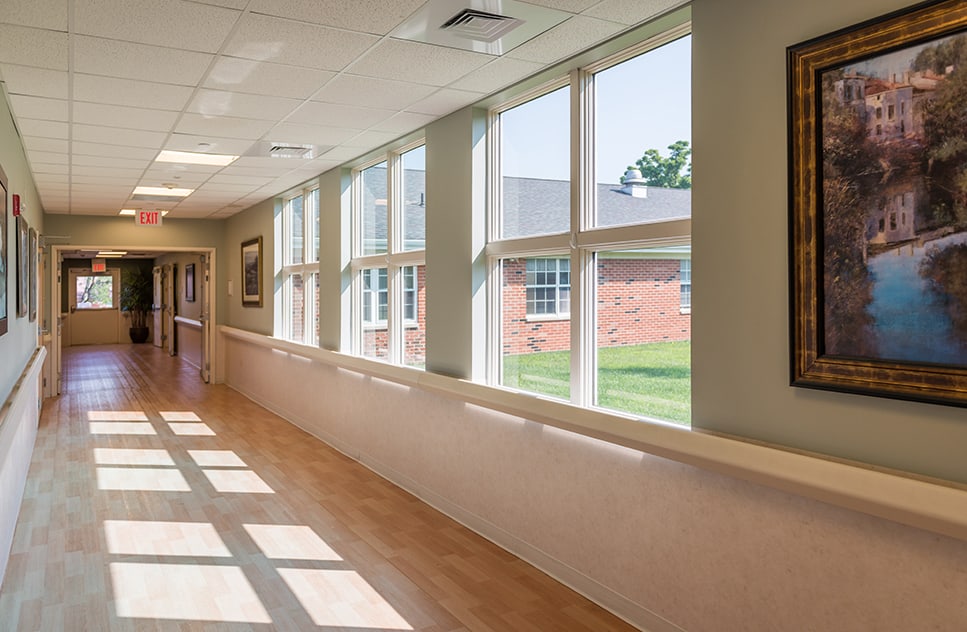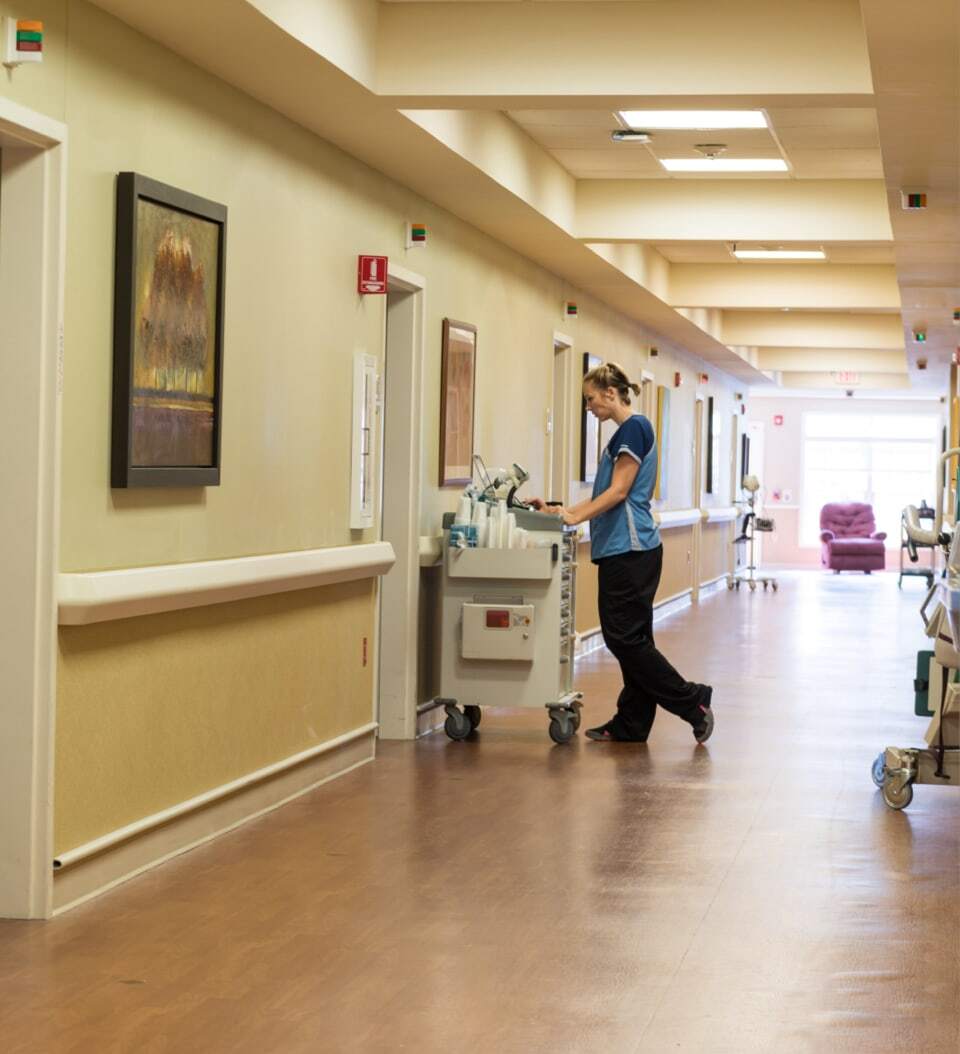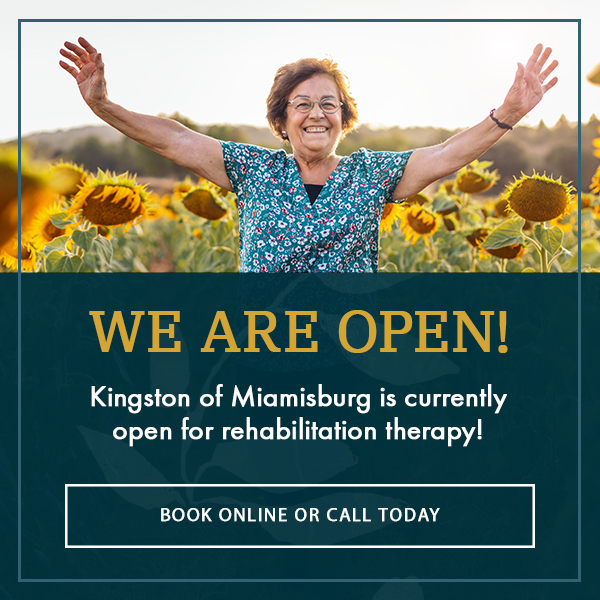Key Takeaways
- Health conditions like vision changes, heart problems, and diabetes can increase fall risk.
- Physical changes, including muscle weakness and balance issues, contribute to falls.
- Medications and environmental hazards at home create additional fall risks.
- Multiple factors often work together to cause falls in older adults.
- Professional care communities provide comprehensive fall prevention support.
Understanding Falls: Knowledge Is the First Step to Safety
Falls are one of the most common concerns for families caring for aging loved ones. Understanding what causes these incidents can help you take steps to keep your family member safer and more confident in their daily activities. At Kingston of Miamisburg, we’ve seen how a proper understanding of fall risks helps families make informed decisions about their loved one’s care and safety.
Falls in older adults typically result from a combination of health conditions, physical changes, medications, and environmental factors that work together to increase risk. By recognizing these factors early, you can work with healthcare providers and consider supportive living options like skilled nursing or assisted living to help reduce fall risk.
Common Health Conditions That Lead to Falls
Changes in Vision and Hearing That Affect Balance
Vision problems make it harder for your loved one to see obstacles, steps, or changes in floor surfaces. Poor lighting conditions can make these challenges worse throughout the day.
Hearing changes can also affect balance since the inner ear helps maintain stability. When hearing declines, your family member might not notice sounds that usually help them stay oriented in their environment.
These sensory changes often develop gradually, so your loved one might not realize how much their balance and safety have been affected.
Heart Conditions and Blood Pressure Issues
Heart problems can cause dizziness or weakness that leads to falls. When the heart doesn’t pump blood effectively, your loved one might feel lightheaded when standing up or moving around.
Blood pressure medications can sometimes cause sudden drops in blood pressure. This creates a feeling of dizziness or faintness, particularly when your family member stands up quickly.
Diabetes and Other Chronic Health Problems
Diabetes can cause nerve damage in the feet, making it harder for your loved one to feel the ground beneath them. This loss of sensation affects their ability to maintain balance while walking.
Other chronic conditions, like arthritis, can cause joint pain and stiffness. These symptoms make movement more difficult and can throw off your family member’s normal walking pattern.
Memory Loss and Cognitive Changes
Memory changes can cause your loved one to forget about safety precautions they once followed automatically. They might not remember to use handrails or move slowly when getting up and down.
Cognitive changes can also affect judgment about what activities are safe. Your family member might attempt tasks that are now beyond their physical abilities.
Physical Changes That Increase Fall Risk

Weak Muscles and Poor Balance
Muscle strength naturally changes with age, particularly in the legs and core. Weaker muscles make it harder for your loved one to catch themselves if they start to lose their balance.
Balance problems often develop slowly over time. Your family member might start to feel unsteady but not realize how significantly their stability has changed.
Regular physical activity can help maintain strength and balance, but many people become less active as they age. Our leg strengthening exercises for seniors can help improve stability and reduce the risk of falls.
Foot Problems and Pain
Foot pain, bunions, or other foot problems can change how your loved one walks. An altered walking pattern increases the risk of tripping or losing balance.
Numbness in the feet makes it difficult to feel the ground properly. Your family member might not realize they’re stepping on uneven surfaces or small objects.
Dizziness and Lightheadedness
Dizziness can have many causes, from inner ear problems to medication side effects. When your loved one feels dizzy, they’re much more likely to fall.
Lightheadedness often happens when standing up too quickly. This sudden change in position can cause a temporary drop in blood pressure.
Home and Environmental Factors
Poor Lighting and Vision Hazards
Dim lighting makes it difficult for your loved one to see obstacles, steps, or changes in floor surfaces. Nighttime trips to the bathroom are particularly risky.
Glare from windows or bright lights can also create vision problems. Your family member might have trouble seeing clearly when moving from bright to dark areas.
Slippery Surfaces and Loose Rugs
Wet floors, loose rugs, and polished surfaces create slip hazards throughout the home. These problems are often easy to overlook but can cause serious falls.
Throw rugs and bathmat edges can catch on shoes or walkers. Even small rugs can create tripping hazards if they slide or bunch up.
Unsafe Footwear Choices
Slippers without proper support or shoes with slick soles increase the risk of falls. High heels or shoes that don’t fit properly can also affect your loved one’s balance.
Walking in socks on smooth floors creates a significant slip hazard. Many falls happen when people are wearing only socks or loose-fitting footwear.
Bathroom and Stairway Safety Concerns
Bathrooms are common fall locations due to wet surfaces and hard fixtures. Getting in and out of tubs or showers can be particularly challenging.
Stairs become more dangerous when handrails are missing or unstable. Poor lighting on stairways compounds these safety concerns.
How Senior Living Communities Help Prevent Falls
Professional Health Monitoring
Communities provide 24/7 care and regular health monitoring to catch changes that might increase fall risk. Professional caregivers can spot warning signs early and take action.
Regular medication reviews and coordination with healthcare providers help identify and address medication-related fall risks. This professional oversight provides peace of mind for families.
Safe Living Environment Design
Senior living communities are designed with safety in mind, featuring proper lighting, non-slip surfaces, and grab bars where needed. These environmental modifications significantly reduce fall hazards.
Professional maintenance teams keep walkways clear and address safety concerns promptly. This removes the burden of home safety management from you and your loved one.
Exercise Programs and Physical Therapy
Structured exercise programs help maintain strength, balance, and flexibility. Physical therapy services can address specific mobility concerns and provide personalized fall prevention strategies. Group fitness activities make it easier for your loved one to stay active and engaged. Regular exercise is one of the most effective ways to prevent falls and maintain independence.
Because Peace of Mind Begins with a Safe Environment
Falls don’t have to be an inevitable part of aging, but they do require careful attention and often professional support. At Kingston of Miamisburg, we understand how concerning falls can be for families and provide comprehensive support to help reduce these risks through our skilled nursing, rehabilitation, and memory care services.
If you’re worried about fall risk for your loved one, contact our caring team today to learn how our 24/7 care and safety-focused environment can provide the support your family needs.







